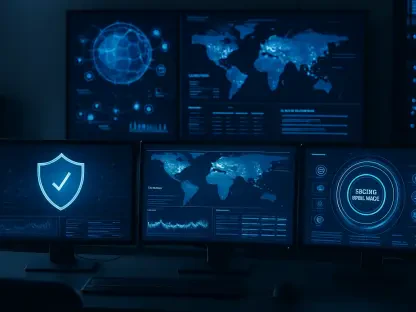In an age where data security is paramount, a critical vulnerability was found in Commvault’s Command Center, a suite integral to data management and security. The flaw, dubbed CVE-2025-34028, posed significant risks, enabling potential remote code execution through a path traversal bug. This vulnerability was notably severe, earning a CVSS score of 10, the highest possible rating for criticality. It sparked immediate concern and action across technology sectors, shining a light on the responsibilities of software providers in safeguarding user data. As with many high-stakes security issues, the discovery and resolution process often reflects broader conversations in the cybersecurity field, particularly regarding the accessibility and timeliness of patches for all users.
Escalation and Initial Response
Discovery of the Vulnerability
The vulnerability in Commvault’s Command Center was first brought to light by watchTowr Labs’ security team and later highlighted by the Cybersecurity and Infrastructure Security Agency (CISA). This discovery made it imperative for Commvault to act swiftly in mitigating the risks associated with this flaw, especially since it had already been exploited in the wild. CISA’s advisories urged users operating on Windows and Linux platforms to update to the latest software edition to mitigate the risks posed by this critical flaw. However, this recommendation underscored a larger issue involving the distribution of necessary security patches to users.
Delayed access to critical updates for some users caused significant concern, revealing a notable gap in Commvault’s initial response framework. It initially appeared that users of the trial versions were not promptly receiving the vital patches. This situation exemplified the challenges faced by companies in extending security measures uniformly across different user bases. Despite having what seemed to be the correct version, these users remained vulnerable without the patch, illustrating a serious oversight in update deployment.
Investigations and User Advocacy
Will Dorman, a well-known former CERT security analyst, played a pivotal role in rallying for equitable access to security patches. His investigation uncovered critical gaps in the timely broadcast of updates, particularly affecting users of the Command Center’s free trial version. Dorman’s advocacy put immense pressure on Commvault to reassess and improve its advisory, pushing the company to rectify misconceptions about update sufficiency. The necessity for supplementary updates was apparent, yet these additional protections were not easily available, leading to increased scrutiny of Commvault’s patch distribution strategy.
Initially, it seemed financial considerations might have delayed access to patches, as free version users experienced a lag of nearly a month compared to their subscribed counterparts. However, Dorman’s engagement with Commvault proved instrumental in driving policy changes. In response, and after reconsidering their strategy, Commvault swiftly amended its policy to ensure that updates were equally available to all users, regardless of their subscription status. This action demonstrated an important shift towards prioritizing security posture over financial segmentation, leveling the field for all users against the exploit.
Comprehensive Resolution and Policy Changes
Commvault’s Corrective Measures
Commvault’s response to the security flaw evolved significantly, culminating in crucial policy adjustments. Following a conversation with Dorman, Commvault updated its approach, ensuring that both paying customers and trial users could obtain crucial patches immediately as they become available. This new policy reflects a broader industry trend toward inclusivity in software security, acknowledging the risks involved in withholding critical updates from any user group. The company’s revised strategy emphasized a commitment to offering immediate access to the latest software iterations, including those distributed through major platforms like Azure and AWS.
By allowing trial users to download essential updates alongside licensed ones, Commvault showcased a proactive stance in reinforcing its security policies. This shift in policy underscores a growing understanding within the tech industry: security gaps need to be bridged promptly regardless of user engagement level. The amendments indicate a significant step toward aligning corporate practices with urgent security needs, demonstrating the power of constructive feedback and active dialogue between companies and IT security communities.
Implications for the Cybersecurity Landscape
This incident serves as a crucial reminder for enterprises and software providers alike about the importance of establishing an egalitarian security framework. It underscores the necessity for ensuring that all users, irrespective of their economic contribution or software version, receive equal protection against imminent vulnerabilities. The responsiveness displayed by Commvault, albeit initially delayed, signals a broader recognition of consumers’ rights and responsibilities in the digital world. As software becomes increasingly integral to business and personal operations, policies that ensure equitable patch distribution will likely become a benchmark for industry standards.
Furthermore, this scenario illustrates the immense impact of collaborative efforts in cybersecurity, combining the insights of security experts with proactive company policies to achieve comprehensive solutions. Commvault’s eventual responsiveness to constructive critique ensured that users not only received necessary security updates but also gained renewed trust in the software solution they employ. As cybersecurity threats continue to evolve, fostering open and effective communication channels between security communities and software providers will be essential in preemptively addressing threats and reinforcing users’ confidence.









